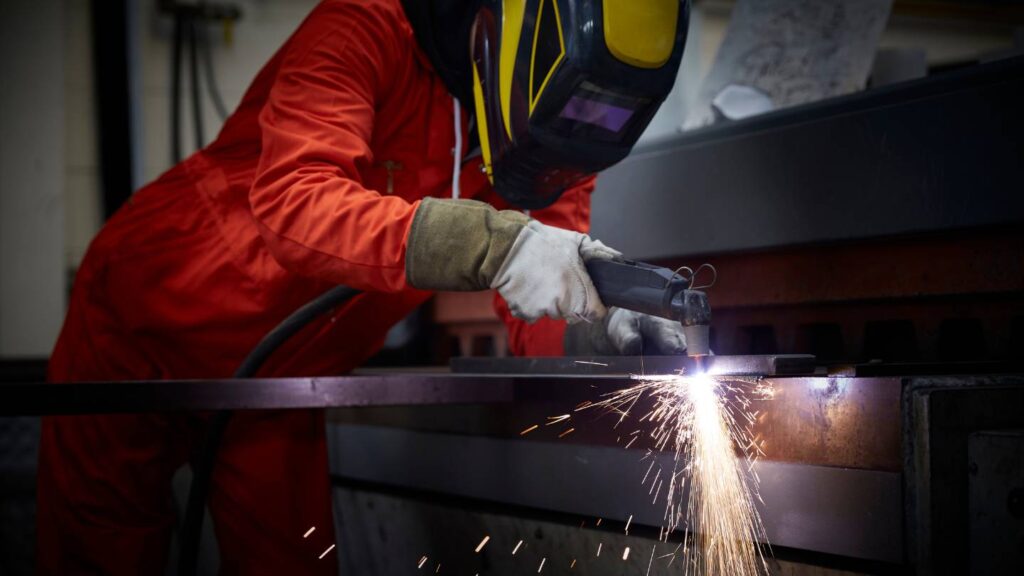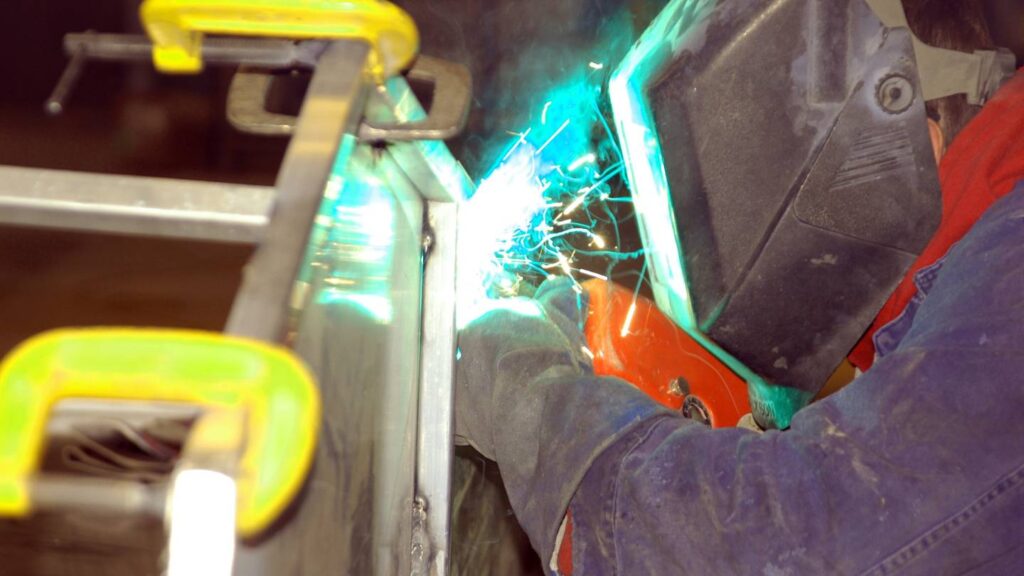Aluminium fabrication is a precise and essential process across industries such as aerospace, automotive, and construction. The use of specialised equipment is crucial to handle aluminium’s unique properties, which include being lightweight, durable, and corrosion-resistant. This article provides an in-depth look into the essential tools and machinery required for efficient aluminium fabrication.
Let’s get straight to the point
Aluminium fabrication is a critical process used in industries like aerospace, automotive, and construction. It involves cutting, shaping, joining, and finishing aluminium using specialised equipment due to the metal’s unique properties, such as being lightweight, durable, and corrosion-resistant.
Essential tools include saws, water jets, plasma and laser cutters, press brakes, roll-forming machines, and welding equipment. Key industries rely on aluminium for its versatility, affordability, and durability. Understanding the necessary tools and techniques is crucial for producing high-quality aluminium components that meet industry standards.

What Is Aluminium Fabrication?
Aluminium fabrication involves transforming raw aluminium into products and components used across various industries. This process typically includes cutting, shaping, joining, and finishing the material to meet specific design and structural requirements.
Cutting Tools for Aluminium Fabrication
Cutting aluminium into desired shapes and sizes is the first step in the fabrication process. It requires precision and accuracy, achieved using specialised cutting tools.
- Saws
- Band Saws: Band saws are commonly used in aluminium fabrication for their ability to produce straight or curved cuts in both thick and thin aluminium sheets.
- Circular Saws: Circular saws provide clean, precise cuts and are ideal for cutting aluminium extrusions and large sheets.
- Water Jets
Water jet cutting uses a high-pressure stream of water, often mixed with abrasive materials, to cut through aluminium. This method is preferred when heat-sensitive materials need to be cut, as it avoids heat distortion. - Plasma Cutters
Plasma cutters use a high-temperature plasma arc to cut through aluminium quickly and efficiently. They are particularly effective for cutting thicker materials. - Laser Cutters
Laser cutters offer unmatched precision and are used for intricate designs and fine details in aluminium sheets. This tool is especially useful for creating complex shapes without material waste.
Forming and Shaping Aluminium
Forming and shaping aluminium is crucial for creating components with specific profiles and dimensions. The following equipment is commonly used for this purpose:
- Press Brakes
Press brakes are used to bend aluminium sheets into precise angles and shapes. This tool is essential in the production of custom components where accuracy is paramount. - Roll Forming Machines
Roll forming machines are utilised to continuously bend aluminium strips into complex cross-sectional profiles. This method is particularly useful in manufacturing long components like rails and frames. - Stamping Presses
Stamping presses shape aluminium by pressing it between a die and a punch. This process is efficient for high-volume production and is widely used in the automotive industry.
Welding Equipment for Aluminium Fabrication
Joining aluminium parts together requires specialised welding equipment, as aluminium has different properties compared to other metals like steel. The most common welding techniques for aluminium include:
- TIG Welding
TIG (Tungsten Inert Gas) welding is preferred for thin aluminium sections. It provides clean and strong welds, making it ideal for applications where appearance and precision are important. - MIG Welding
MIG (Metal Inert Gas) welding is used to make thicker aluminium materials. This technique is faster than TIG welding and is effective for creating durable joints in heavy-duty applications. - Specialised Electrodes and Shielding Gases
Using the correct electrodes and shielding gases is crucial in aluminium welding to prevent oxidation and ensure high-quality welds.
Surface Finishing Equipment
Surface finishing is an essential step in aluminium fabrication, enhancing the metal’s appearance, durability, and resistance to environmental factors.
- Anodising Tanks
Anodising increases aluminium’s corrosion resistance and allows for various finishes. This process is widely used in products that require a decorative yet durable surface. - Powder Coating Systems
Powder coating provides a protective layer over aluminium, which can be applied in different colours and textures. This method is commonly used in automotive and architectural applications. - Painting Booths
Painting booths are used to apply custom paint finishes to aluminium products. The controlled environment ensures even application and high-quality results.
Key Industries That Rely on Aluminium Fabrication
Aluminium’s versatility and unique properties make it a valuable material in several key industries. Below are some of the primary sectors that rely heavily on aluminium fabrication:
Aerospace Industry
In the aerospace industry, aluminium is prized for its lightweight nature and resistance to corrosion. Components such as wings, fuselages, and engine parts are often fabricated from aluminium to reduce the weight of aircraft, thus improving fuel efficiency.
- Aluminium Skins: Used in aircraft exteriors to provide a lightweight yet durable surface.
- Fuselages: Aluminium fuselages contribute to the overall structural integrity of the aircraft.
- Electronic Enclosures: Aluminium’s non-magnetic properties make it ideal for housing sensitive electronics in aircraft.
Automotive Industry
The automotive industry utilises aluminium for manufacturing lightweight vehicle parts, contributing to improved fuel efficiency and performance. Some common applications include:
- Vehicle Frames: Aluminium frames are used to reduce the overall weight of vehicles, enhancing fuel efficiency.
- Engine Components: Aluminium is used in engines for its heat resistance and lightweight properties.
- Body Panels: Aluminium panels provide a strong yet lightweight exterior for vehicles, improving safety and fuel economy.
Medical Industry
Aluminium’s non-toxic nature and ease of sterilisation make it an ideal material for medical equipment. It is used in:
- Hospital Beds: Aluminium is used in the frames of hospital beds due to its strength and ease of cleaning.
- Medical Devices: Ventilators, stethoscopes, and other medical devices often contain aluminium components.
- Storage Cabinets: Aluminium cabinets are common in hospitals for storing medical supplies, thanks to their durability and resistance to corrosion.
Energy and Power Distribution
Aluminium’s conductivity and resistance to corrosion make it a key material in the energy sector. Applications include:
- Junction Boxes: Aluminium is used for junction boxes in power distribution systems due to its durability and electrical conductivity.
- Transformers: Aluminium components in transformers help in efficient power transmission.
- Utility Items: Aluminium is favoured for utility poles and cables because of its light weight and strength.
Telecommunications Industry
The telecommunications industry relies on aluminium for building and maintaining infrastructure. Its uses include:
- Masts and Towers: Aluminium masts and towers are lightweight and easy to erect, making them ideal for telecommunication applications.
- Data Centres: Aluminium is used in data centre storage systems for its lightweight and conductive properties.
- Instrument Enclosures: Aluminium enclosures protect sensitive telecommunications equipment from environmental factors.

Types of Aluminium Sheets Used in Fabrication
Different grades of aluminium sheets are used in fabrication, each offering specific properties suitable for various applications. The most common types include:
- Aluminium Sheet 1100
- Properties: High corrosion resistance, lightweight, and excellent durability.
- Applications: Used in chemical processing equipment, food handling machinery, and refrigeration systems.
- Aluminium Sheet 3003
- Properties: Strong, corrosion-resistant, and easy to form and weld.
- Applications: Common in automotive panels, roofing, and heat exchangers.
- Aluminium Sheet 6061
- Properties: High strength-to-weight ratio, weldability, and corrosion resistance.
- Applications: Used in structural components, automotive parts, and marine equipment.
Benefits of Aluminium Fabrication
Aluminium offers numerous advantages, making it a preferred material in various industries. Some of the key benefits include:
- Affordability
Aluminium is one of the most cost-effective metals available. Its low maintenance requirements further reduce long-term costs, making it a budget-friendly choice for both small and large-scale projects. - Durability
Aluminium is known for its high strength-to-weight ratio. This property ensures that even thin aluminium sheets can withstand significant forces, making them ideal for structural applications. - Flexibility
Unlike other metals, aluminium is highly flexible and easy to shape, bend, and weld. This flexibility makes it suitable for creating intricate components required in various industries. - Conductivity
Aluminium’s excellent electrical and thermal conductivity makes it ideal for use in heating and cooling devices, as well as in electrical applications. - Lightweight
Aluminium’s lightweight nature makes it easy to handle and transport. This property is especially beneficial in industries like aerospace and automotive, where reducing weight is crucial for performance and efficiency. - Non-Magnetic Properties
Aluminium’s non-magnetic nature is advantageous in electrical applications, where it is used to encase delicate components, protecting them from magnetic interference. - Environmental Friendliness
Aluminium is 100% recyclable, making it an environmentally responsible choice. Recycling aluminium requires only a fraction of the energy needed to produce new aluminium, significantly reducing the environmental impact. - Corrosion Resistance
Aluminium’s natural oxide layer protects it from corrosion, ensuring long-lasting performance even in harsh environments. This property makes it ideal for outdoor and marine applications.
Conclusion
Aluminium fabrication requires a range of specialised equipment to handle the metal’s unique properties and deliver high-quality products. From cutting and shaping tools to welding and finishing equipment, each tool plays a critical role in the fabrication process.
Aluminium’s versatility, affordability, and durability make it a preferred material across industries, including aerospace, automotive, medical, energy, and telecommunications.
By understanding the essential equipment and techniques involved in aluminium fabrication, manufacturers can produce components that meet the highest standards of quality and performance.

